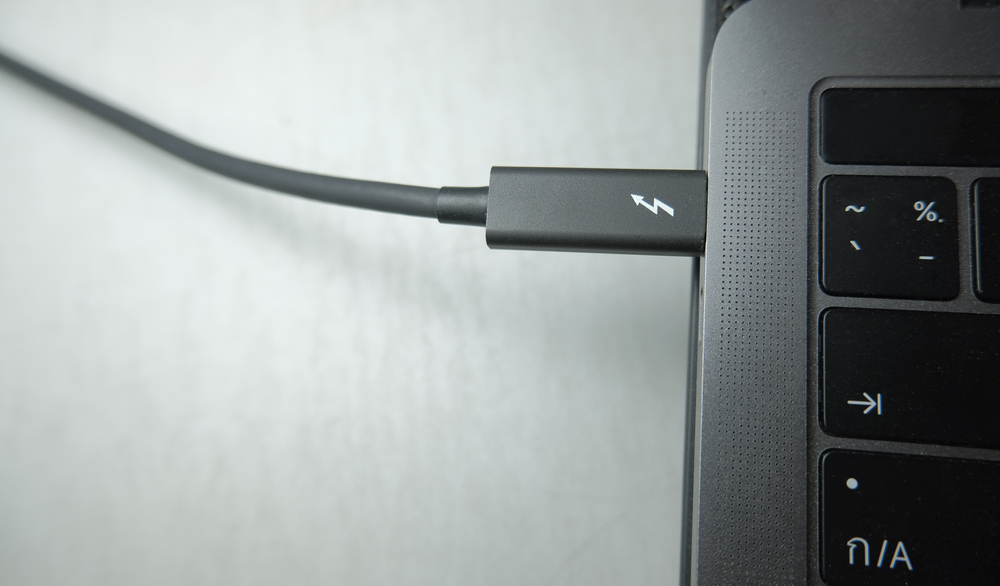Thunderbolt 4 is just starting to make noise in the consumer space, but, of course, the folks behind the technology are already looking toward the next generation. This week, executives from Intel stopped by The Tom’s Hardware Show to discuss Thunderbolt and what its next form could look like.
While celebrating Thunderbolt’s 10th birthday, Ben Hacker, Intel’s director of I/O strategy in the Client Connectivity Division, explained that the development of Thunderbolt 4’s successor is already in place with sights set on higher speed.
“What I think we’re pretty confident of is for at least another speed bump somewhere, and who knows exactly what that is, but call it roughly a doubling,” Hacker said on The Tom’s Hardware Show.
Thunderbolt 4’s max bandwidth is 40 Gbps, allowing it to support up to two 4K resolution displays at 60 Hz refresh rates or even an 8K one at 60 Hz. Increasing the bandwidth would bring support for even higher resolutions and refresh rates.
Hacker also pointed toward the need for more bandwidth for concurrent workflows, like editing data on a high-resolution screen, and SSDs as drivers for more bandwidth.
“Today our data path bandwidth within Thunderbolt 4 is kind of aligned to like a PCIe Gen 3×4 performance, and for some of our storage applications, you’re seeing storage in that kind of form factor already doubling in speed,” Hacker said.
“There’s already a need for kind of high-performance storage for, maybe, NVMe SSDs or desktop raid arrays that are going to be able to consume more than the 40 gigabits of bandwidth or just under 40 that we can provide today.”
Backward compatibility is also important for the next generation of Thunderbolt. Intel notably shared the Thunderbolt protocol for what is now known as USB4.
“We started first with that connector and cable convergence, and then we have the architectural convergence [with USB4],” Jason Ziller, Intel’s general manager of the Client Connectivity Division, said. “As we move forward, as USB4 evolves, we’ll continue to be converged on those elements of it. But we’ll continue to provide features and capabilities above that or just the optional features in the USB spec that we make required because we know computer users want them.”
The next version of Thunderbolt will presumably be called Thunderbolt 5, but Ziller said they don’t know what the branding moving forward will be yet. Whatever it’s called, Intel expects next-gen Thunderbolt to continue working over USB-C.
“I think we can definitely stay within the electrical kind of communication path and on the same connector so it’s truly a familiar, backward compatible … solution,” Hacker said. “ … At least kind of for the next step, whenever that comes, I think we’re pretty confident that we can keep that on a kind of same mechanical interface, same connector, roughly the same topology.”
Of course, we’re still years away from Thunderbolt 5 (or whatever it ends up being called) striking. In the more immediate future, development is in the works for more Thunderbolt 4 accessories, including docks in different sizes and shapes and docks that don’t require their own power adapter and instead uses a laptop’s USB-C charger.
And for those with the need, Thunderbolt 4 cables up to 50m (164 feet) long should be available around next year.
“We had in [the] previous generation optical cables up to 50m, and so we’re working on delivering that as well now,” Ziller said.
The Tom’s Hardware Show is live every Thursday at 3 p.m. ET. You can enjoy this week’s episode via the video above, on YouTube, Facebook, Twitch or wherever you get your podcasts.
